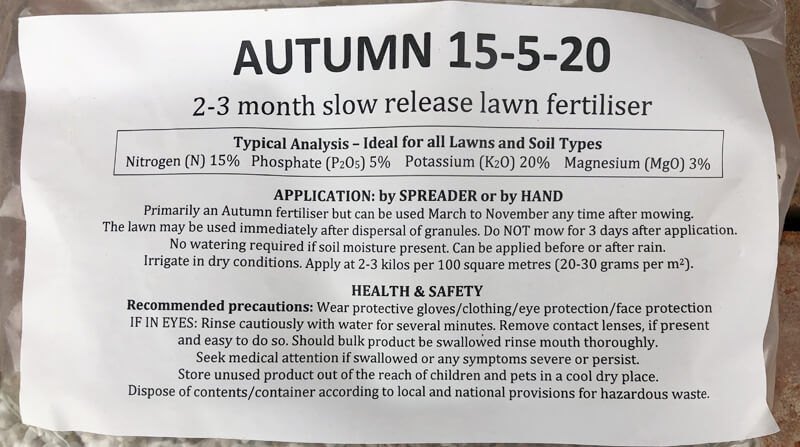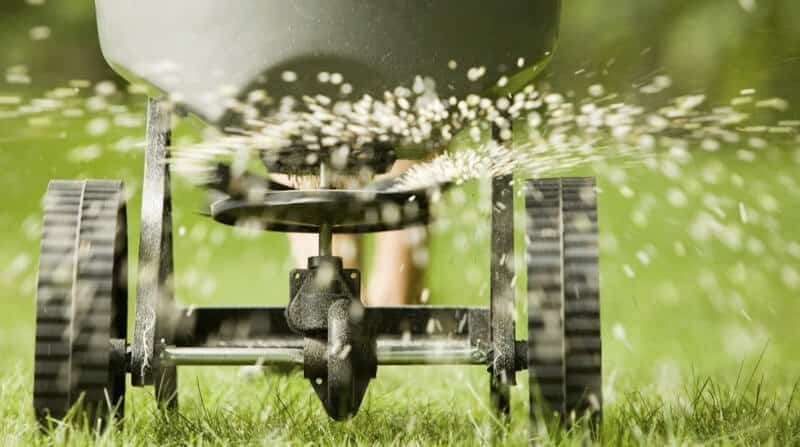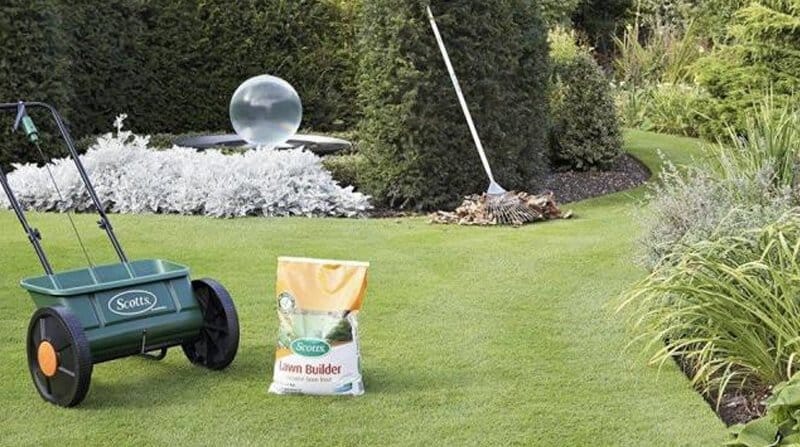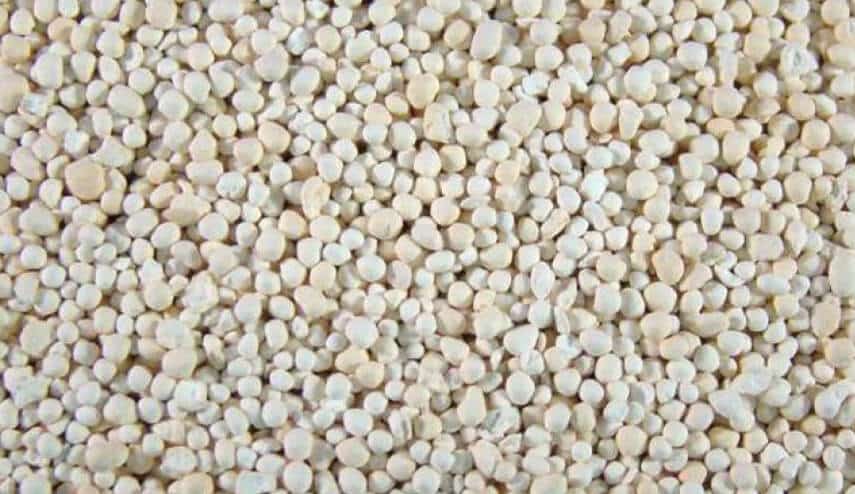Many gardeners don’t use lawn fertiliser and when they do, they do it incorrectly.
It’s no wonder.
If you let it, fertilising your lawn can become incredibly complicated.
So in this article, I want to explain what lawn fertiliser is and how to keep your lawn lush and green with the most basic understanding.
What is Lawn Fertiliser?

Lawn fertiliser, also known as lawn feed is often thought of as food.
However, this isn’t strictly true.
All fertiliser products, whether granular or liquid are nothing more than compounds that contain the chemical elements plants need to make food for themselves. These chemical elements include;
Nitrogen (N)
- Important for forming cells and stimulating grass growth
- Helps create chlorophyll (what makes the grass green) which is used in photosynthesis
- Promotes flowering and seeding
- Improves root development and overall lawn health
Phosphate (P)
- Needed for the production of food
- Important for grass growth
- Encourages strong root development
Potassium (K)
- Assists in the creation of plant cells
- Plays an important role in photosynthesis and other plant functions
- Affects the cold and drought tolerance of the plant
- Can be lost from the soil and need regular top-ups
The contents on fertiliser products are displayed as NPK values. Learn how to read and understand lawn feed NPK labels.
Why Fertilising Your Lawn is Important

With every day that passes, your lawn has a little less of the nutrients it needs to maintain health and vigour.
If you don’t replace them, the health of your lawn will decline over time.
What Happens a Lawn Starved of Nutrients
Without a steady supply of nutrients, grass can’t function. Production of food stalls, growth slows and roots become weak.
You’ll see the grass turn yellow or brown as it becomes dormant, attacked by disease or dies.
Your lawn will become thinner and weeds will take over in the bare patches where grass once grew.
So How Do the Nutrients In Your Lawn Decline?
The nutrients in your lawn decline over time as a result of two things;
1. You remove them every time you cut the grass.
Grass and other plants use photosynthesis to make food from water, carbon dioxide and the chemical elements that come from fertiliser.
Moisture on the surface of your lawn and in the soil dissolves the fertiliser. This enables grass to consume the chemical elements via its roots. It then uses them to produce food which it stores in the leaf.
Every time you cut the grass you remove that all-important water and the nutrients which come from fertiliser.
If you cut the grass often and mow at the correct height, the decline in nutrients will be gradual. However, if you let it grow long and then mow too short, you’ll remove all those nutrients and water all at once. This can have a devastating impact on your lawn.
Either way though, every time you mow the lawn, you remove the nutrients it needs to stay healthy.
If you have a mulching lawn mower, you can mulch the grass back into your lawn when you mow to recycle the nutrients in those clippings and slow down the decline in nutrients.
2. They Get Washed Away By Rain
Water is vital to the health of your lawn as it helps transport the nutrients in fertiliser into the grass plants via its roots.
However, heavy rainfall can wash these nutrients away.
Autumn of 2019 was one of the wettest on record according to the Met Office with weeks of constant heavy rain.
Many lawns suffered as the nutrients they needed for grass to stay healthy and strong were washed away. As a result, diseases like Rust and Fusarium Patch was rife.
Different Fertiliser For Different Times of Year

As you know, grass needs Nitrogen, Phosphate and Potassium in order to function and grow.
However, your lawn needs different amounts of each, depending on the time of year. Using the wrong type at the wrong time of year can cause your lawn more harm than good.
Spring/Summer Fertiliser
During the spring and summer, your lawn is actively growing, producing flowers and seed heads.
In order to do this, it needs a feed with plenty of Nitrogen and Potassium and some Phosphate.
However, things are different when it comes to autumn and winter.
Autumn/Winter Fertiliser
During the wetter, colder months of autumn and winter, growth and food production all but stops.
Instead of growing new leaf, the grass plants focus their attention on strengthening their roots.
As a result, it doesn’t need anywhere near as much Nitrogen. It needs a little bit but a healthy dose of Potassium so it can build thicker cell walls and increase its tolerance to the cold.
The Danger of Applying the Wrong Fertiliser at the Wrong Time of Year
Applying the wrong fertiliser at the wrong time of year can have a negative effect on your lawn.
For example, if you apply a spring/summer lawn feed in autumn or winter, the large dose of Nitrogen can cause the grass to surge in growth when it doesn’t have the other ingredients to support that growth. This excessive growth comes at the expense of its tolerance to cold and wet, making it more prone to disease.
On the other hand, applying and autumn/winter feed in the spring or summer, means you don’t give the grass enough Nitrogen or Phosphate to aid growth. This results in a sward that isn’t as dense at it should be and the risk of weed seeds germinating in your lawn.
View: Lawn Care Calendar – A Month-by-Month Guide
In Conclusion
Ultimately, lawn fertiliser can be broken down into two types;
- Spring and summer, and
- Autumn and winter.
There’s no real need to make it any more complicated than this.
You only need to apply lawn feed four times a year to maintain a lush, healthy sward. Have a look at my simple lawn feeding schedule for more information on when to feed your lawn.
You should also learn how to feed your lawn with granular fertiliser and how to apply liquid lawn feed properly.


Good morning
Grateful if you can advise on doing a second application of autumn lawn food. Would it be detrimental to the grass? I have used Evergreen Autumn Lawn food using their 2 wheeled applicator for the recent treatment.
Many thanks
Will Pettit